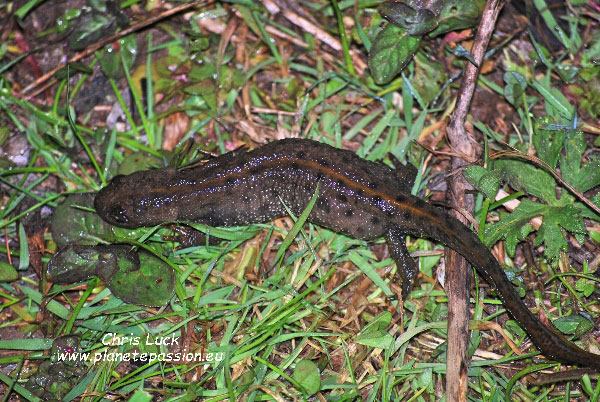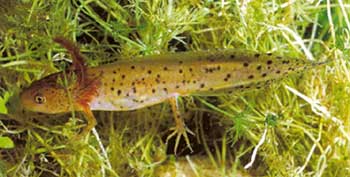|
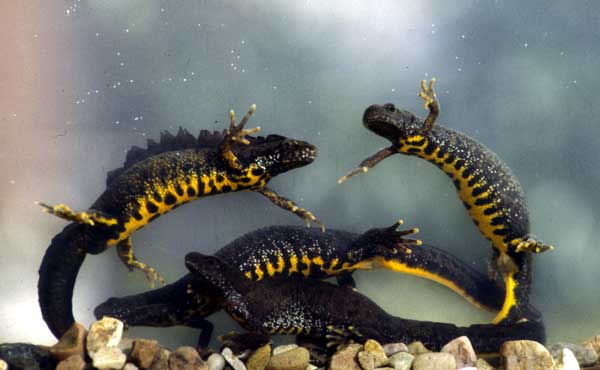

Share on Facebook
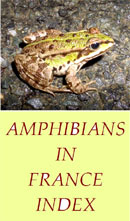

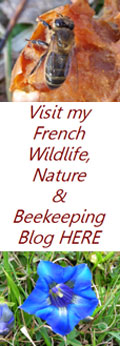

|
|
|
|
Crested Newt Triturus cristatus Triton Crêté
|
|
The Crested Newt, or Great Crested Newt as it is sometimes known, is the largest European Newt growing to 18 cm in length, with a tail that makes up almost half of this length. The “fingers and toes” are un-webbed at all times. Colouration varies depending on whether it is in land phase or the aquatic breeding phase as does the size of the males crest. In land phase the colour is generally dark, brown or olive green with darker spots and light speckling and the males crest is greatly reduced. The underneath is yellow with bold black markings which are unique to each individual. In the aquatic breeding phase the males’ crest, which is jagged, becomes much larger reaching from tail to head, colouration becomes bolder and bluer and there is evidence of yellow on the legs, fingers and toes. In the case of the female there is an increase in the size of the smooth crest on the tail with similar changes in colour.
|
|
| |
|
|
Photo. Crested newts showing belly colours and markings. |
| |
|
During the terrestrial phase the adults move away from the water anything from 30 metres to 500 metres, rarely further, where they live in undergrowth, woodland leaves and debris where they prey on worms, slugs, insects and their eggs and larvae. Hibernation takes place around the middle of November in holes in the ground, under rocks, piles of old wood and various other underground cavities.
|
|
|
| |
|
|
Photo. Female crested newt, aquatic phase, France |
| |
| The newts make their way to the water anytime from January to April depending on the region and although the actual reproductive activity is normally March/April some adults may stay in the water until July. The female produces 200 to 250 eggs which are laid singly and take between 15 and 40 days to hatch depending on the temperature of the water; the larvae metamorphose in about 60 days. Due to a genetic anomaly up to half the eggs produced die. Sexual maturity is reached after 3 years during which time they probably will not return to the water and they have a maximum life span of 18 years. |
|
| |
|
Photo.
Larval phase crested newt, France. |
| |
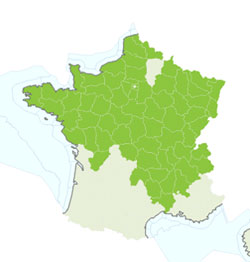
Very serious population loss in many areas due to destruction of habitat
- loss of ponds, the introduction of fish, population fragmentation and genetic isolation.
Fully protected species.
|


